Lynn Chadwick, R.A. Follow First Girl Sitting On Bench incised with the artist's signature, dated, numbered and stamped with the Burleighfield foundry mark 'CHADWICK C68 1988 4/9' on the base of the cloak bronze 99 x 115 x 78 cm (38 7/8 x 45 1/4 x 30 3/4 in.) Executed in 1988, this work is number 4 from an edition of 9.
Provenance Private Collection, Belgium Exhibited Bath, Beaux Arts, April 1989 (another example exhibited and illustrated, p. 15) Literature Denis Farr & Éva Chadwick, Lynn Chadwick Sculptor, With a Complete Illustrated Catalogue 1947-1988 , Oxford, 1990, no. C68, p. 334 (another example illustrated) Denis Farr & Éva Chadwick, Lynn Chadwick Sculptor, With a Complete Illustrated Catalogue 1947-1996 , Stroud, 1997, no. C68, pp. 374 (another example illustrated, p. 375) Dennis Farr & Éva Chadwick, Lynn Chadwick. Sculptor: With a Complete Illustrated Catalogue 1947-2005, Aldershot, 2006, no. C68, pp. 382 (another example illustrated, p. 383) Dennis Farr & Éva Chadwick, Lynn Chadwick Sculptor: with a Complete Illustrated Catalogue 1947-2003, Aldershot, 2014, no. C68, pp. 376-377 (another example illustrated) We are grateful to Dr Sarah Chadwick for her assistance with the cataloguing of this work. Catalogue Essay First Girl Sitting On Bench, 1988, is a culmination of Lynn Chadwick’s progressive sculptural practice which has maintained an integral position in British sculpture from the 1950s until today. Instantly recognisable, Chadwick’s figures are a defining three-dimensional symbol of post-war British art; Chadwick sought to encompass a new modern aesthetic in a world rebuilding itself after the turmoil of the Second World War. A key member of Herbert Read’s ‘Geometry of Fear’ generation, Chadwick, who had participated in the age-defining Festival of Britain in 1951, was selected to represent his country in the New Aspects of British Sculpture show at the Venice Biennale in 1952 alongside his artist contemporaries, later winning the International Grand Prix for Sculpture at Venice in 1956 over Alberto Giacometti Alan Bowness expressed to the Observer in June 1956, in response to Chadwick’s exhibition at Venice that year, 'Chadwick has been one of the revelations of the Biennale. This Biennale award marks the emergence of Lynn Chadwick as a figure of international artistic importance' (Alan Bowness, 'The Venice Biennale', Observer , 24 June 1956, in Dennis Farr, Lynn Chadwick , London, 2003, p. 44). Thirty-two years after his landmark Venice show, Chadwick was commissioned by the British Council to create a large sculpture for the garden of the British Pavilion in recognition of his incomparable contribution to British art. The artist’s Back to Venice sculpture, executed and exhibited in the same year as First Girl Sitting On Bench , marks a seminal moment in which the artist retrospectively reflected on his sculptural achievements and celebrated the symbols, motifs and techniques which he had honed during his enquiry into sculptural representation. In his Back to Venice work, Chadwick depicts two figures, a seemingly male and female sitting beside each other in magisterial stillness. In the present work Chadwick concentrates solely on the female form, experimenting with conveying femininity through the slightness of line, rendered expertly in bronze. Working primarily with single figures or couple formations in his later works, First Girl Sitting On Bench is paradigmatic of Chadwick’s later sculptural output, whereby the artist had honed his visual language and execution, synthesising his life’s work into his regally cloaked forms. Rigid in stature, as if supported by a geometric skeleton, Chadwick’s female figure in the present work appears to be wearing armour-like garments, bridging the gap between Henry Moore’s 1940s drapery in his Shelter Drawings and the progressive cubist abstraction of the European milieu. Capturing the contemporary zeitgeist of artistic rebellion after World War Two, Chadwick’s figures are animated although static, appearing upright, alert and contemplative. Gazing out serenely, Chadwick’s figure is executed in a figurative abstract style and cast in bronze, a medium which the artist began utilising in the late 1950s. Creating his own unique technique of constructing metal frames for his figures, Chadwi
Lynn Chadwick, R.A. Follow First Girl Sitting On Bench incised with the artist's signature, dated, numbered and stamped with the Burleighfield foundry mark 'CHADWICK C68 1988 4/9' on the base of the cloak bronze 99 x 115 x 78 cm (38 7/8 x 45 1/4 x 30 3/4 in.) Executed in 1988, this work is number 4 from an edition of 9.
Provenance Private Collection, Belgium Exhibited Bath, Beaux Arts, April 1989 (another example exhibited and illustrated, p. 15) Literature Denis Farr & Éva Chadwick, Lynn Chadwick Sculptor, With a Complete Illustrated Catalogue 1947-1988 , Oxford, 1990, no. C68, p. 334 (another example illustrated) Denis Farr & Éva Chadwick, Lynn Chadwick Sculptor, With a Complete Illustrated Catalogue 1947-1996 , Stroud, 1997, no. C68, pp. 374 (another example illustrated, p. 375) Dennis Farr & Éva Chadwick, Lynn Chadwick. Sculptor: With a Complete Illustrated Catalogue 1947-2005, Aldershot, 2006, no. C68, pp. 382 (another example illustrated, p. 383) Dennis Farr & Éva Chadwick, Lynn Chadwick Sculptor: with a Complete Illustrated Catalogue 1947-2003, Aldershot, 2014, no. C68, pp. 376-377 (another example illustrated) We are grateful to Dr Sarah Chadwick for her assistance with the cataloguing of this work. Catalogue Essay First Girl Sitting On Bench, 1988, is a culmination of Lynn Chadwick’s progressive sculptural practice which has maintained an integral position in British sculpture from the 1950s until today. Instantly recognisable, Chadwick’s figures are a defining three-dimensional symbol of post-war British art; Chadwick sought to encompass a new modern aesthetic in a world rebuilding itself after the turmoil of the Second World War. A key member of Herbert Read’s ‘Geometry of Fear’ generation, Chadwick, who had participated in the age-defining Festival of Britain in 1951, was selected to represent his country in the New Aspects of British Sculpture show at the Venice Biennale in 1952 alongside his artist contemporaries, later winning the International Grand Prix for Sculpture at Venice in 1956 over Alberto Giacometti Alan Bowness expressed to the Observer in June 1956, in response to Chadwick’s exhibition at Venice that year, 'Chadwick has been one of the revelations of the Biennale. This Biennale award marks the emergence of Lynn Chadwick as a figure of international artistic importance' (Alan Bowness, 'The Venice Biennale', Observer , 24 June 1956, in Dennis Farr, Lynn Chadwick , London, 2003, p. 44). Thirty-two years after his landmark Venice show, Chadwick was commissioned by the British Council to create a large sculpture for the garden of the British Pavilion in recognition of his incomparable contribution to British art. The artist’s Back to Venice sculpture, executed and exhibited in the same year as First Girl Sitting On Bench , marks a seminal moment in which the artist retrospectively reflected on his sculptural achievements and celebrated the symbols, motifs and techniques which he had honed during his enquiry into sculptural representation. In his Back to Venice work, Chadwick depicts two figures, a seemingly male and female sitting beside each other in magisterial stillness. In the present work Chadwick concentrates solely on the female form, experimenting with conveying femininity through the slightness of line, rendered expertly in bronze. Working primarily with single figures or couple formations in his later works, First Girl Sitting On Bench is paradigmatic of Chadwick’s later sculptural output, whereby the artist had honed his visual language and execution, synthesising his life’s work into his regally cloaked forms. Rigid in stature, as if supported by a geometric skeleton, Chadwick’s female figure in the present work appears to be wearing armour-like garments, bridging the gap between Henry Moore’s 1940s drapery in his Shelter Drawings and the progressive cubist abstraction of the European milieu. Capturing the contemporary zeitgeist of artistic rebellion after World War Two, Chadwick’s figures are animated although static, appearing upright, alert and contemplative. Gazing out serenely, Chadwick’s figure is executed in a figurative abstract style and cast in bronze, a medium which the artist began utilising in the late 1950s. Creating his own unique technique of constructing metal frames for his figures, Chadwi

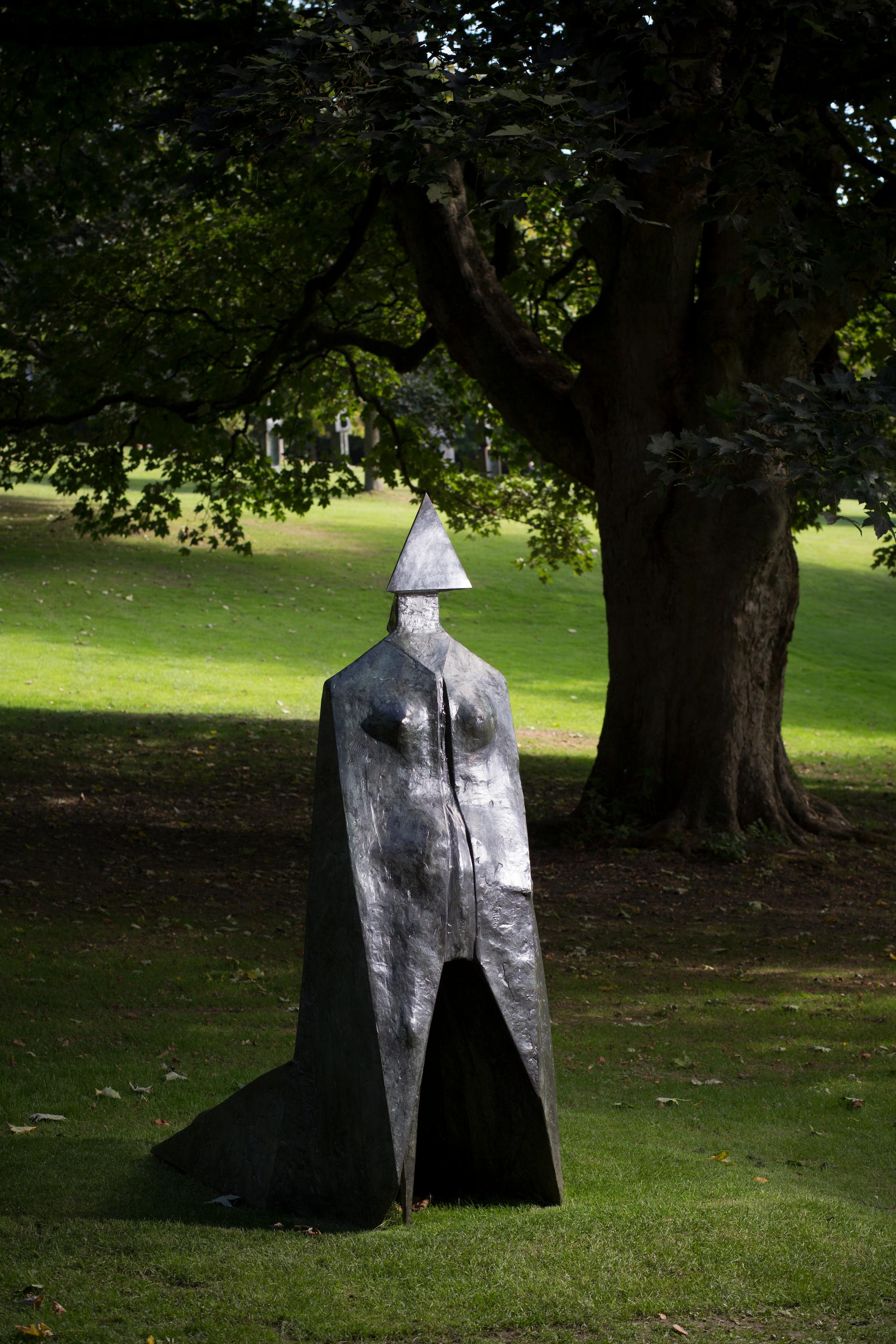
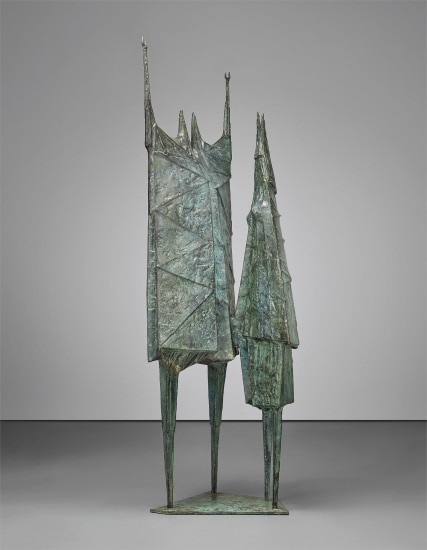

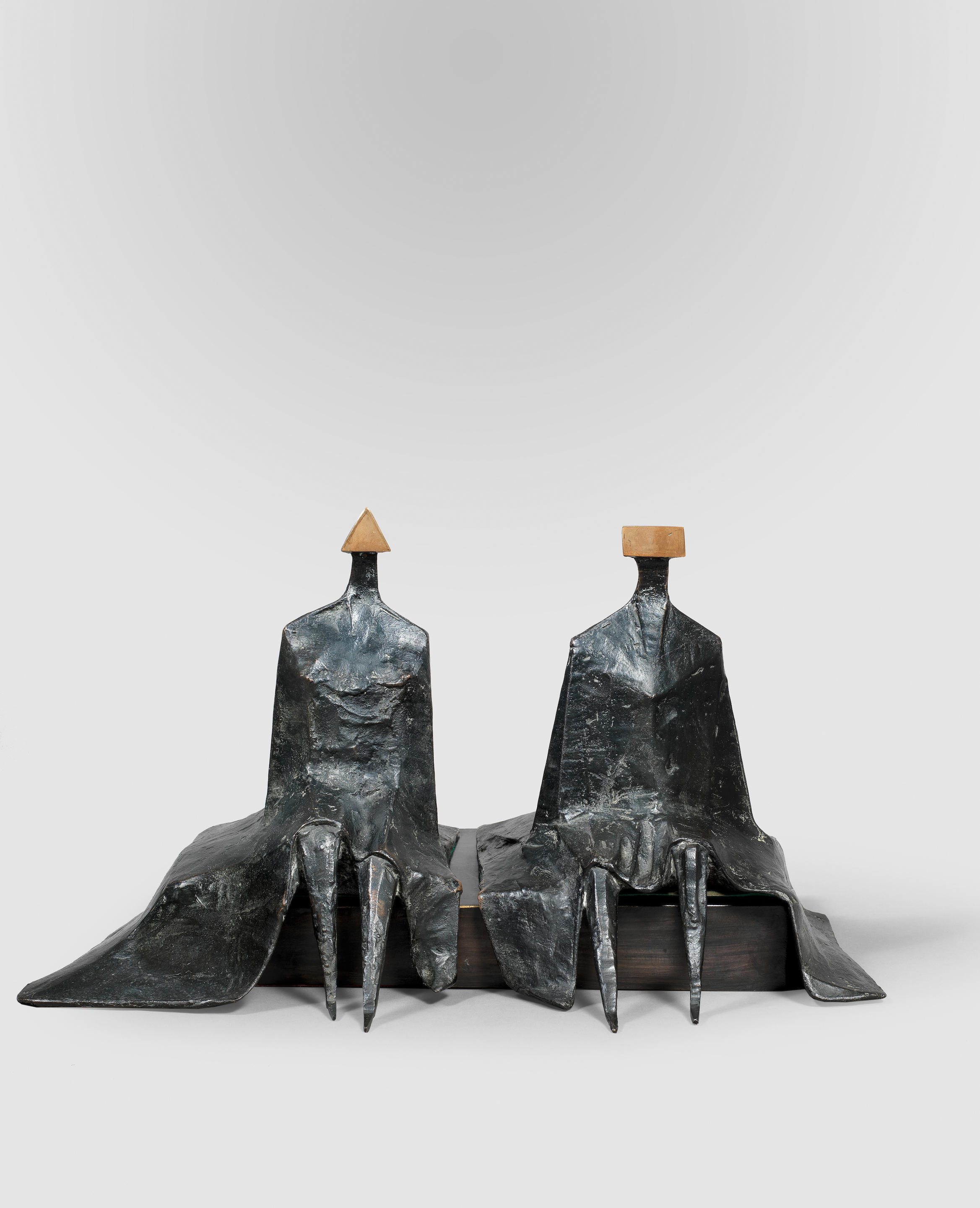

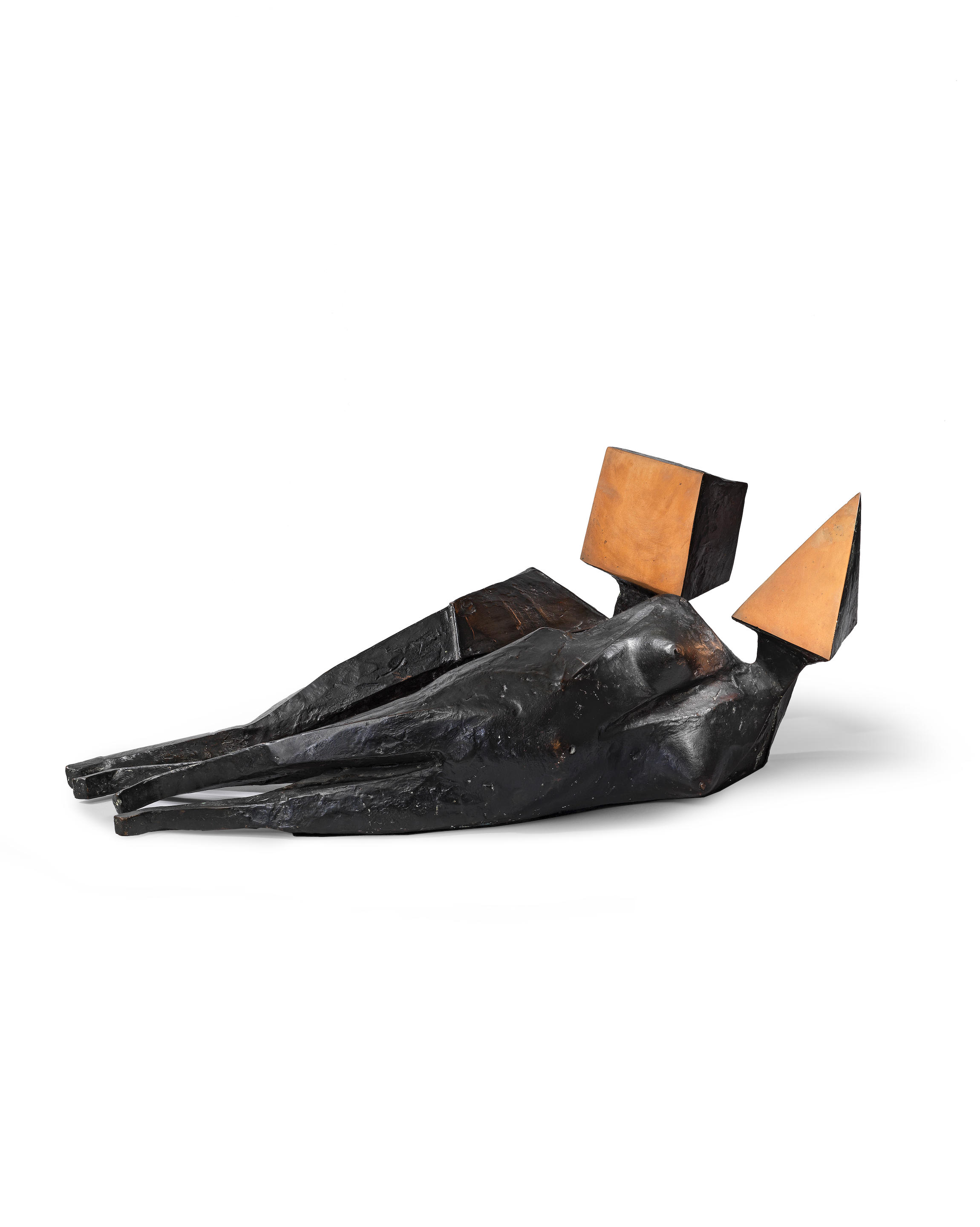
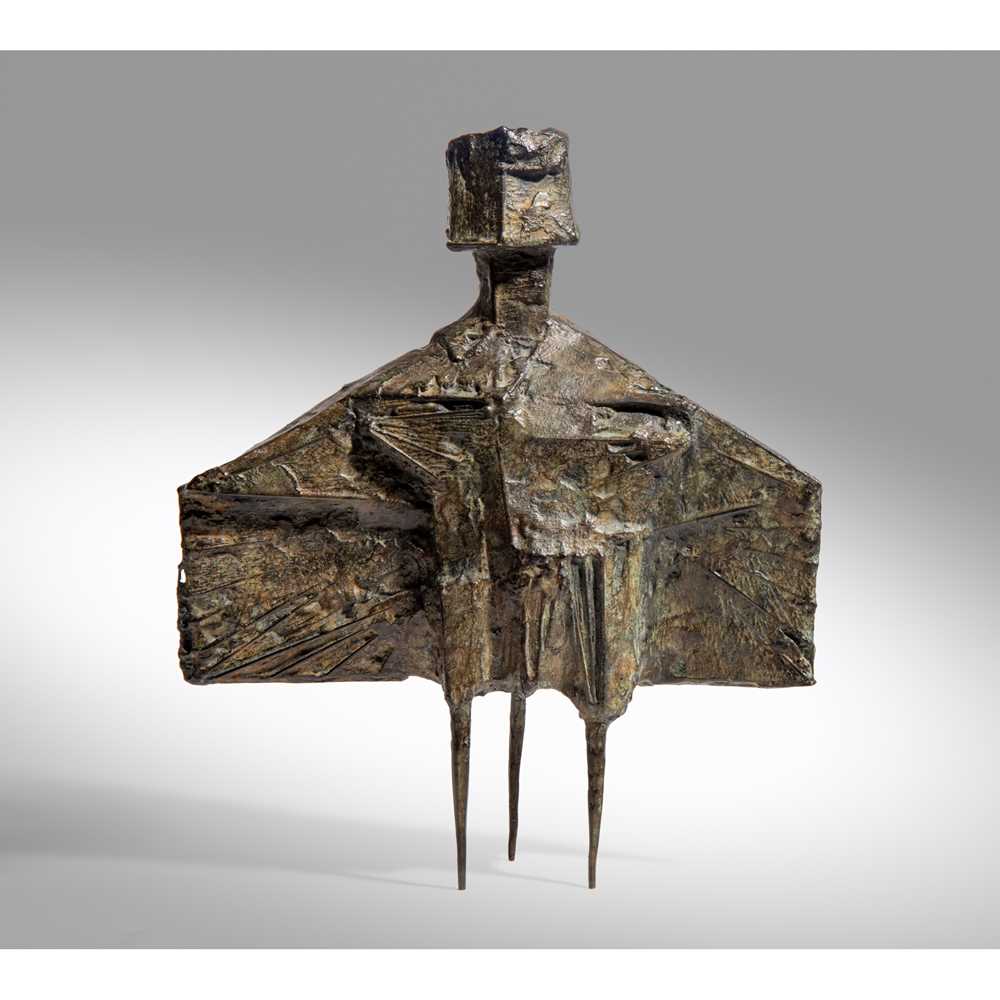

.jpg)
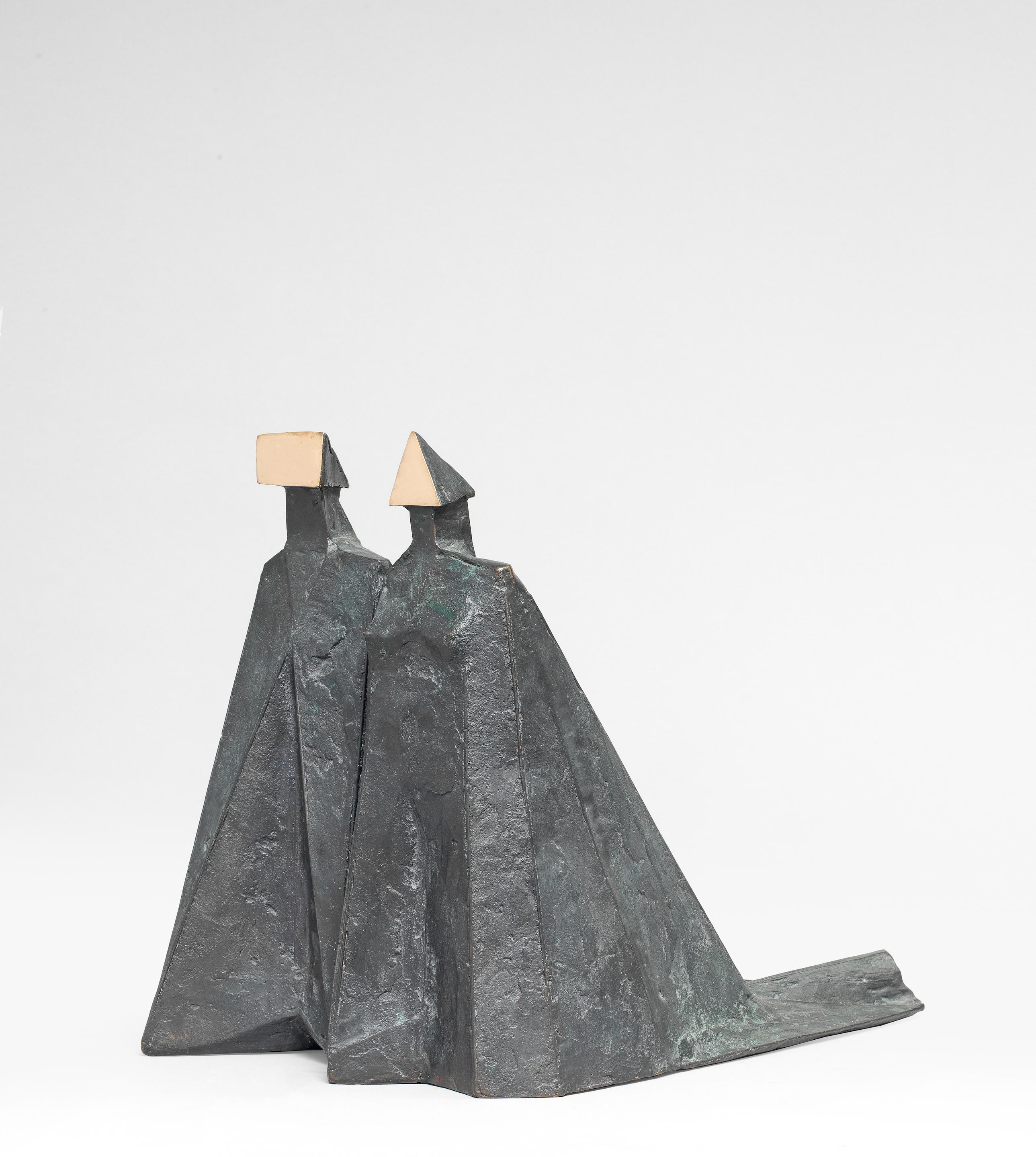
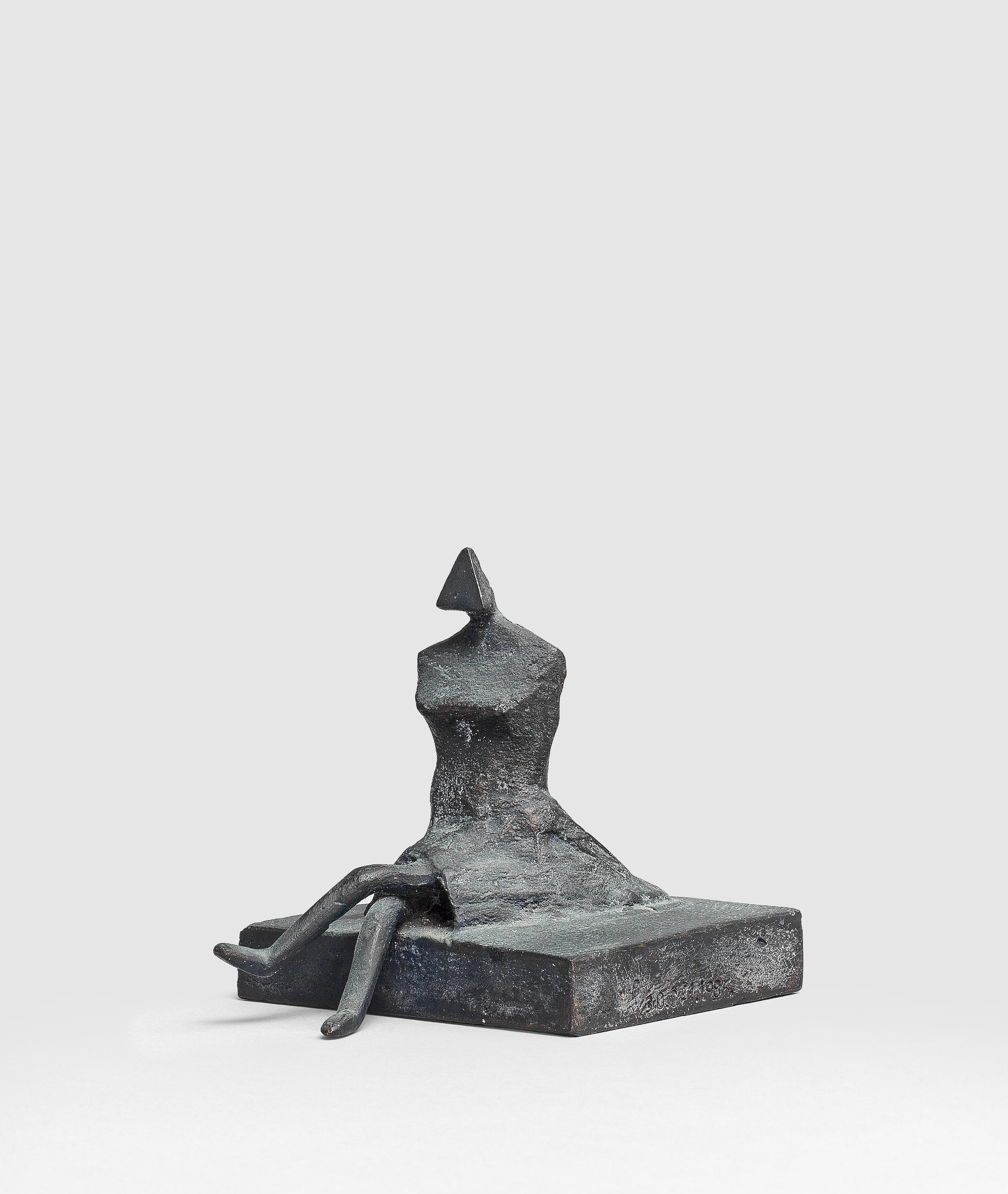
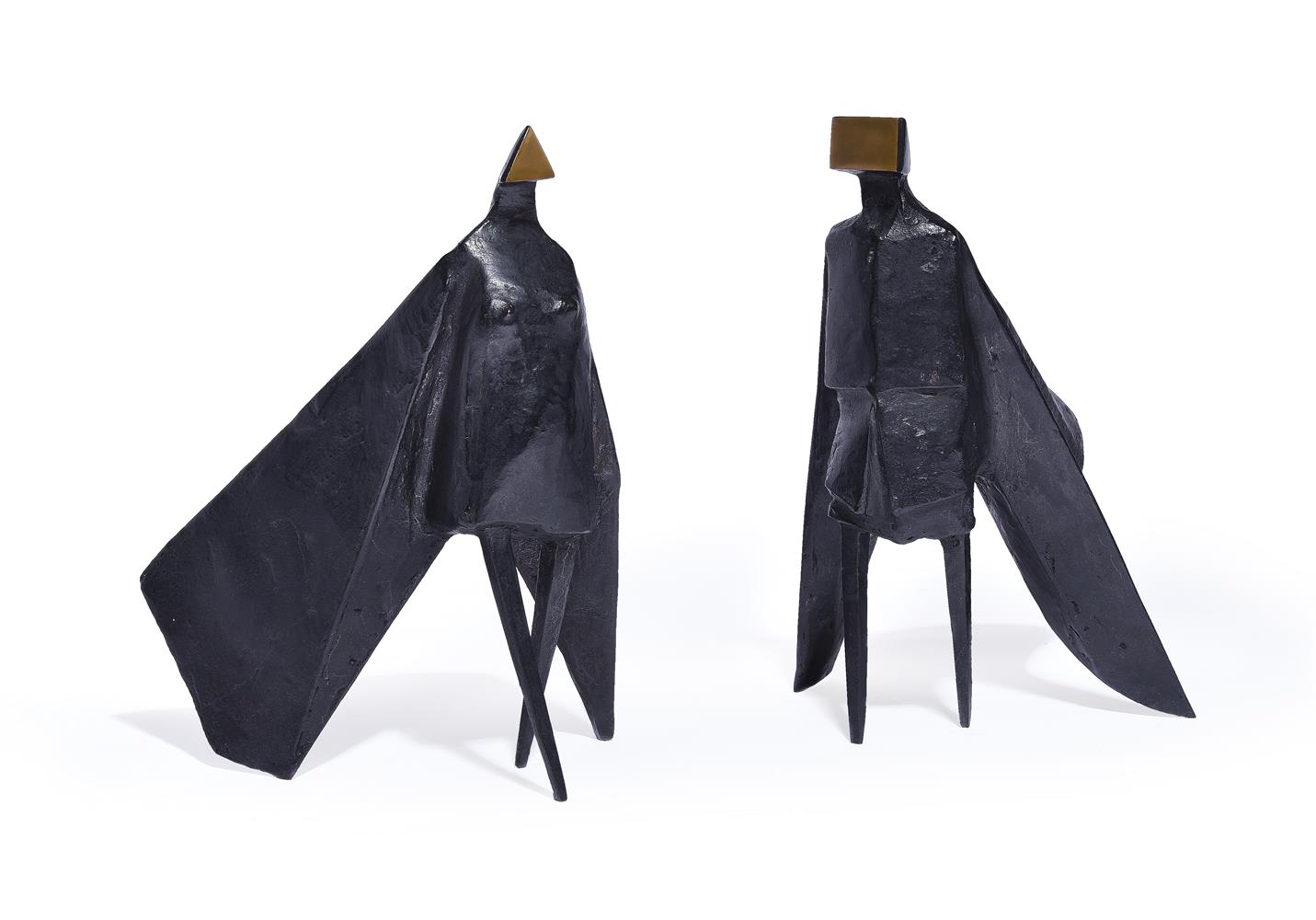
.jpg)
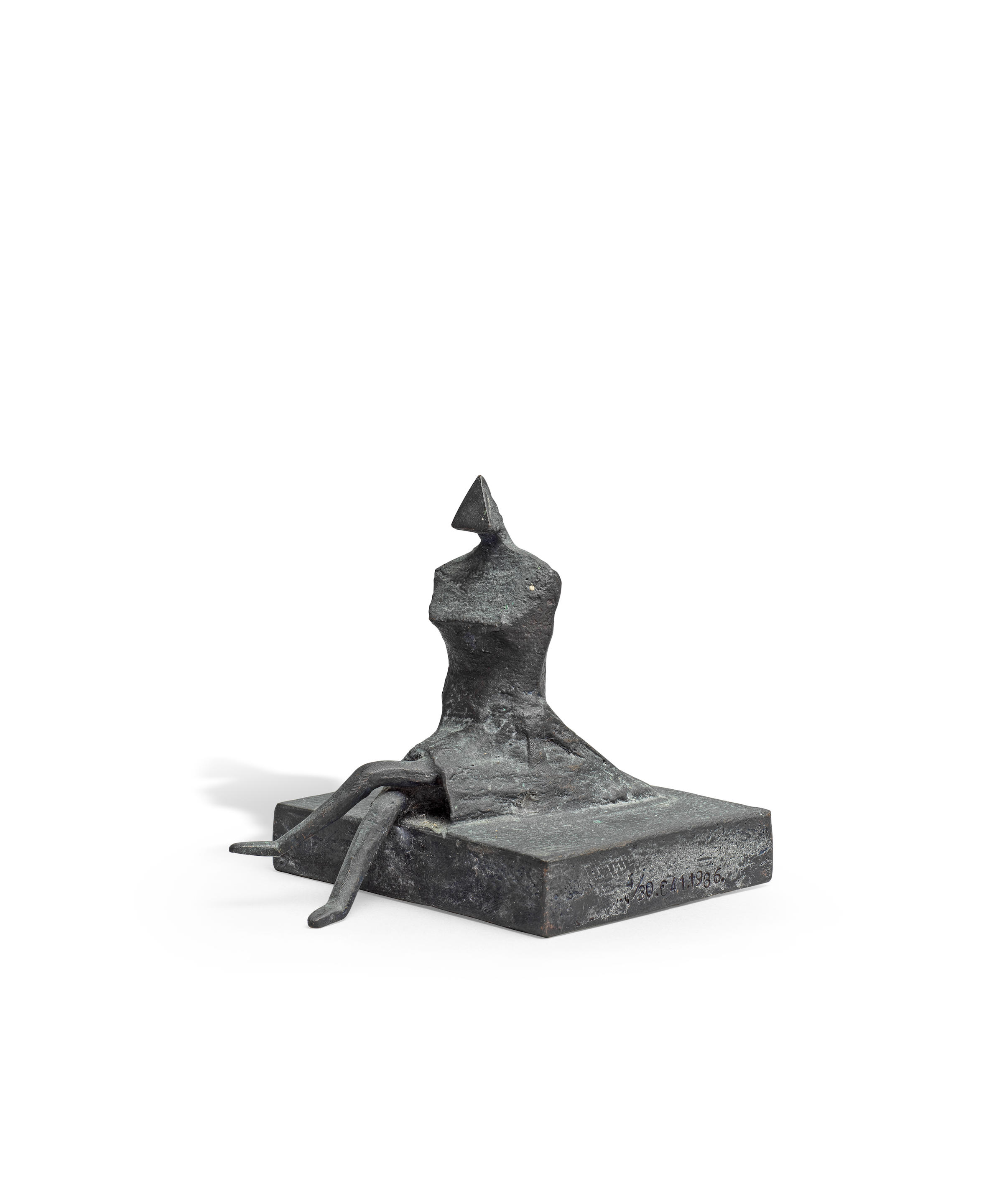
Testen Sie LotSearch und seine Premium-Features 7 Tage - ohne Kosten!
Lassen Sie sich automatisch über neue Objekte in kommenden Auktionen benachrichtigen.
Suchauftrag anlegen